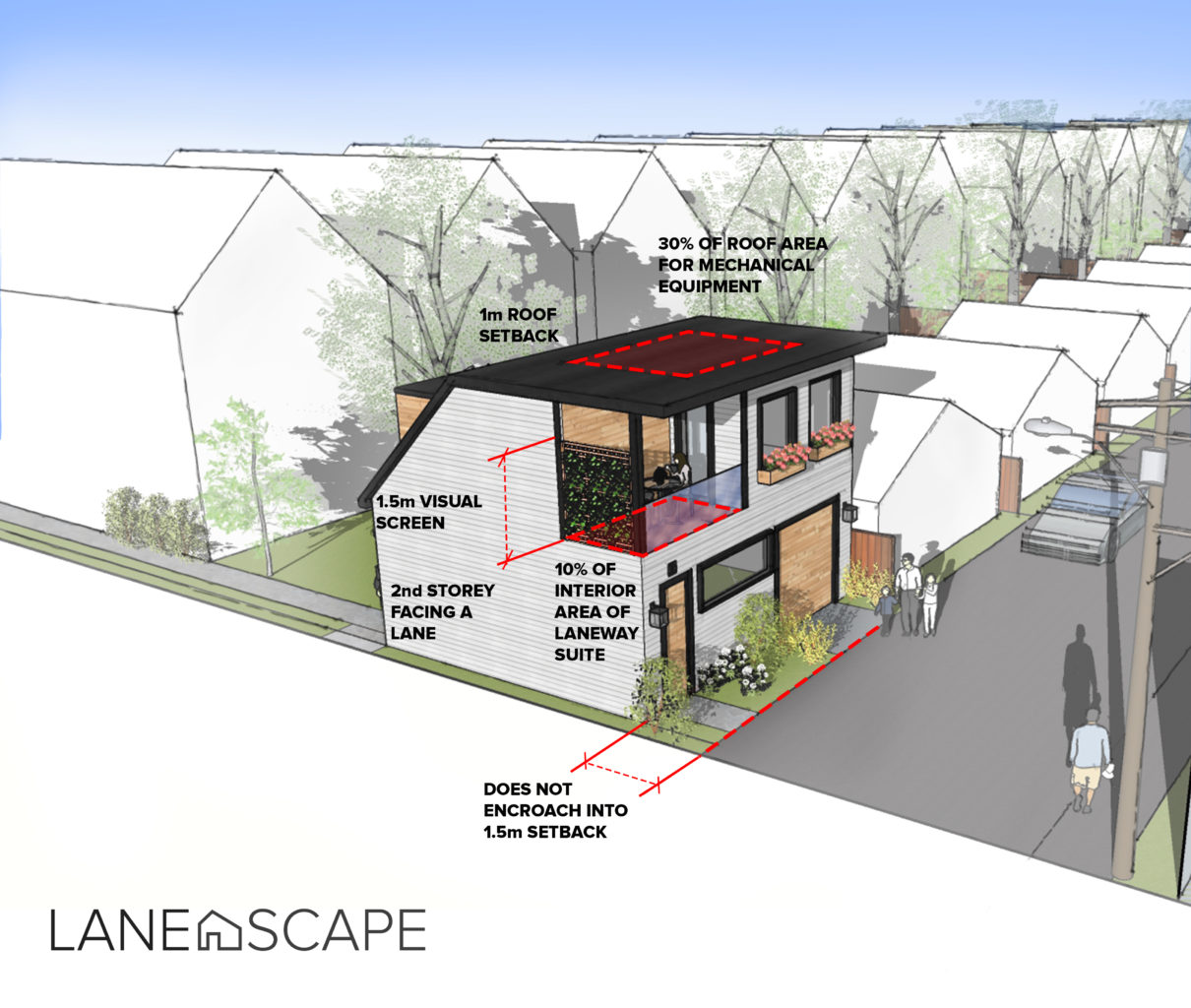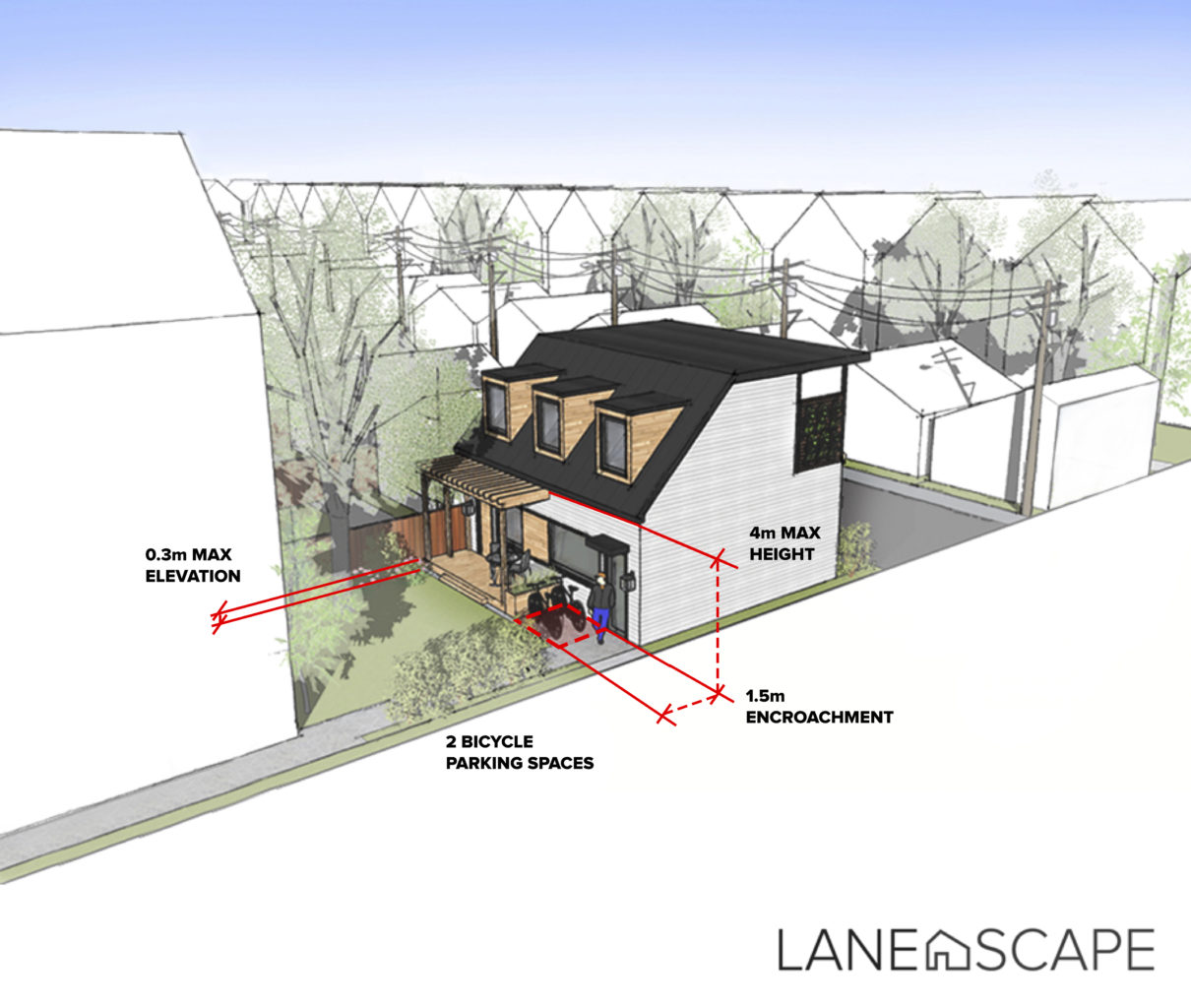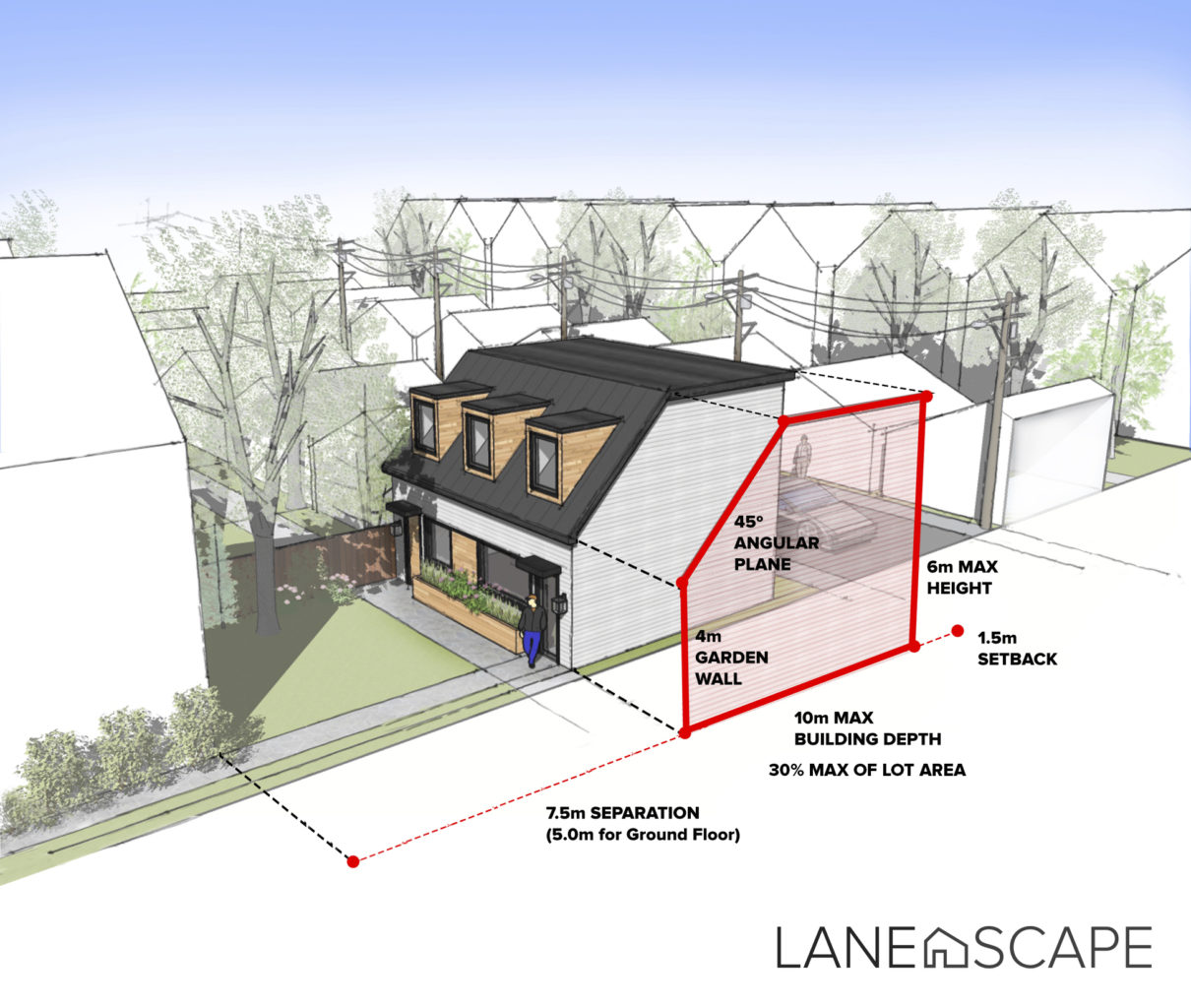After last month’s deferral at the TEYCC, the Changing Lanes policy has been revamped to address Council’s concerns.
In general, the TEYCC asked staff to reconsider and improve points on; affordability, tree and greenspace protection, stricter zoning requirements, and a general review of all comments submitted by citizens.
We are pleased to say that the report has been strengthened by this extra time to make sure the details are improved. Here is a view of the final framework:
LANDSCAPED OPEN SPACE AND TREE PROTECTION
A minimum rear yard dimension of 7.5m is required for 2-storey laneway suites. That can be reduced to 5.0m for a 1-storey unit. In either case, the rear yard must be 85% soft landscaping.
There is also a requirement for a 1.5m strip of greenspace along the laneway that is dedicated to greenery and beauty.
Finally, the Urban Forestry department now has the ability to deny building permits where a tree will be damaged or removed for a laneway suite.

These requirements are very strict. Significantly more strict than the current zoning bylaw requires of equal lots with a garage. However, they are workable, and we support them as a means of moving forward.
Although the new changes will result in more homeowners having to go to the Committee of Adjustment for laneway houses, and many homeowners will “game the system” to avoid these requirements, we know from experience that a competent professional will be able to satisfy the requirements.
BALCONIES AND MECHANICAL EQUIPMENT
Balconies on the second floor are not permitted facing other houses. They can only face the laneway, they must have privacy screens when adjacent to side yards, and they are limited in size.
Mechanical equipment on the roof must be set back from the perimeter, and limited in footprint and height so it will be invisible from the laneway and the rear yards.

We are pleased to see this improvement, and believe it is a very positive change that will ensure Toronto’s laneway houses are beautiful and high quality. These kinds of details are necessary to the policy’s success, and we thank Council for their wisdom and attention to these matters.
PARKING AND DECKS
Decks and canopies over them are limited to a max. depth of 1.5m. Decks are also limited in height to 0.3m above the ground floor. These requirements protect greenspace, and prevent overlook into adjacent yards.
Also, 2 dedicated bicycle parking spaces are required on the site.

AFFORDABILITY
The City will be making $1,000,000 from the federal/provincial Investment in Affordable Housing Program for a pilot for affordable laneway suites, commencing November 1, 2018.
Although we are not sure what the details of this pilot are, or how Torontonians will be able to benefit from this program, we are excited to see a dollar figure in place, and we are hopeful the City will continue to engage citizens while they continue to evolve the Changing Lanes policy.
RESPONSE TO CITIZEN CONCERNS
The letters and deputations from architects and residents (including Lanescape) suggesting the Changing Lanes policy is, in some ways, too restrictive were not accommodated. The policy has only gotten more restrictive.
There was one letter from the ABC Residents Association that expressed concern. That neighbourhood has now been removed from the policy. No laneway suites will be permitted in the ABC neighbourhood.
Instead, there will undoubtedly be a number of residents from this area who will require approval from the Committee of Adjustment, costing them significantly more time, money, and uncertainty than any other part of the Toronto and East York area. This is not fair, and we are strongly opposed to accommodating such a small opposition in spite of overwhelming support.
CONCLUSION
In general, Lanescape supports the current Changing Lanes policy, and encourages all TEYCC Councillors to vote in favour on Wednesday June 6th.
Although the changes will cause more homeowners to require minor variances from the Committee of Adjustment, and some lots will be sterilized where trees are present, and it will encourage more homeowners to “game the system” to circumvent parts of the policy, and we do not know how homeowners can access the subsidies for affordability – these are all things we expect to improve over time as the Changing Lanes policy grows and evolves.
We want to see this policy enacted without delay and without changes, so that Toronto can begin to construct laneway homes with a measured and modest approach, learn from the experience, and improve the policy as we also expand it into additional wards and new housing typologies like rear yard garden suites.
Three years of engagement, consultation, and collaboration with the public, staff, and interest groups made this policy great. The last month has changed it slightly, but the core principles remain strong. Now is the time to put it into action so we can continue to let it grow and evolve like the neighbourhoods they will complete.

